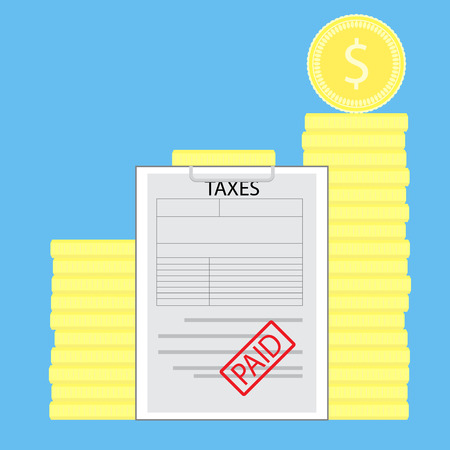Understanding Taxable vs. Tax-Advantaged Accounts
When it comes to tax-efficient withdrawal strategies in retirement, the first step is understanding the differences between taxable and tax-advantaged accounts. Each type of account—whether it’s a traditional IRA, Roth IRA, 401(k), or a regular brokerage account—comes with its own set of tax rules that can significantly affect how much you owe the IRS once you start taking distributions.
Traditional IRAs and 401(k)s are both considered tax-deferred retirement accounts. This means you typically make contributions with pre-tax dollars, lowering your taxable income during your working years. However, when you retire and begin to withdraw funds, those distributions are taxed as ordinary income. Required Minimum Distributions (RMDs) also kick in at age 73 (for most retirees), forcing you to take out—and pay taxes on—a certain amount each year.
On the other hand, Roth IRAs offer a different tax advantage. Contributions are made with after-tax dollars, so there’s no immediate tax break. But qualified withdrawals in retirement are completely tax-free, provided you’ve held the account for at least five years and are over age 59½. Unlike traditional IRAs and 401(k)s, Roth IRAs aren’t subject to RMDs during the account holder’s lifetime, giving you more flexibility in managing your taxable income during retirement.
Brokerage accounts don’t offer any special tax advantages for retirement savings, but they do provide flexibility. Any interest, dividends, or capital gains earned in these accounts may be subject to taxes annually. However, long-term capital gains and qualified dividends are generally taxed at lower rates than ordinary income. This makes them an important part of a diversified withdrawal strategy.
By understanding how each type of account is taxed during retirement, you’ll be better prepared to craft a withdrawal plan that minimizes your overall tax bill while maximizing your retirement income.
2. The Order of Withdrawals: Which Accounts to Tap First
One of the most critical elements of a tax-efficient withdrawal strategy in retirement is determining the best order to draw down your various accounts. Prioritizing withdrawals can help minimize your overall tax liability and extend the life of your savings. In general, retirees have three main types of accounts: taxable brokerage accounts, tax-deferred accounts (like traditional IRAs and 401(k)s), and tax-free accounts (such as Roth IRAs). Here’s a guideline for the typical withdrawal sequence:
| Account Type | Withdrawal Priority | Tax Impact |
|---|---|---|
| Taxable Brokerage Accounts | First | Capital gains taxes on appreciated assets; can utilize long-term capital gains rates and harvest losses |
| Tax-Deferred Accounts (Traditional IRA/401(k)) | Second | Ordinary income taxes on withdrawals; Required Minimum Distributions (RMDs) begin at age 73 |
| Tax-Free Accounts (Roth IRA) | Last | No taxes on qualified withdrawals; no RMDs for original account owner |
This sequence is usually recommended because withdrawing from taxable accounts first allows your tax-advantaged retirement accounts more time to grow. As you spend down your taxable assets, you may also be able to take advantage of lower long-term capital gains rates, especially if your taxable income is lower in early retirement years. Once those funds are depleted, you move to tax-deferred accounts, being mindful of RMD rules to avoid hefty penalties. Finally, Roth IRAs are typically tapped last since qualified withdrawals are tax-free and there are no RMDs during the owner’s lifetime, allowing these funds to compound tax-free for as long as possible.
Customizing Your Withdrawal Plan
Your personal situation may call for adjustments to this general rule. For example, if you anticipate higher tax rates in the future or have significant healthcare expenses that can be offset with itemized deductions, it might make sense to accelerate some withdrawals from tax-deferred accounts earlier. Additionally, strategic Roth conversions can help spread out taxable income over several years and reduce future RMDs.
Key Considerations When Deciding Withdrawal Order:
- Your current and projected future tax brackets
- The timing of Social Security benefits and its impact on taxable income
- The size and composition of your retirement portfolio
- Potential changes in federal or state tax law
Bottom Line:
The sequence in which you withdraw funds plays a vital role in managing your retirement taxes. By following a disciplined withdrawal strategy tailored to your unique financial landscape, you can maximize after-tax income and preserve your nest egg for years to come.

3. Managing Required Minimum Distributions (RMDs)
Once you reach age 73 (or 72 if you turned 72 before January 1, 2023), the IRS requires you to start taking Required Minimum Distributions (RMDs) from most retirement accounts, such as traditional IRAs and 401(k)s. Failing to withdraw the correct amount can result in a hefty penalty—currently 25% of the amount that should have been withdrawn. That’s why having a tax-efficient RMD strategy is crucial for retirees.
Tips for Handling RMDs
- Mark Your Calendar: Set reminders for your RMD deadlines each year so you don’t miss the mandatory withdrawal date, which is usually December 31. For your first RMD, you have until April 1 of the year after you turn 73, but subsequent RMDs must be taken by year-end.
- Calculate Carefully: Each year, calculate your RMD based on your retirement account balances as of December 31 of the previous year. Most major financial institutions provide assistance with RMD calculations, but double-check their numbers to avoid errors.
- Automate Withdrawals: Many brokerage firms allow you to set up automatic withdrawals for your RMDs. This not only ensures you meet IRS requirements but also helps prevent costly penalties.
Strategies to Minimize Tax Impact
- Consider Roth Conversions: Roth IRAs are not subject to RMDs during your lifetime. Gradually converting a portion of your traditional IRA or 401(k) assets into a Roth IRA before reaching RMD age can reduce future RMDs and lower your taxable income in retirement.
- Utilize Qualified Charitable Distributions (QCDs): If you’re charitably inclined and at least age 70½, you can direct up to $100,000 annually from your IRA to qualified charities. QCDs count toward your RMD and are excluded from your taxable income.
- Strategic Account Withdrawals: If you have multiple retirement accounts, consider taking larger distributions from accounts with higher expected tax rates in the future, helping to balance your overall tax liability across retirement years.
Avoiding Costly Penalties
The IRS penalty for missing all or part of an RMD is steep. If you realize youve missed a withdrawal, take action immediately: withdraw the shortfall as soon as possible and file IRS Form 5329 to request a waiver of the penalty—especially if the mistake was due to reasonable error and steps are being taken to fix it. Staying proactive about managing your RMDs will help ensure compliance and keep more money in your pocket during retirement.
4. Converting Traditional Accounts to Roth Accounts
One of the most powerful tax-efficient withdrawal strategies for retirees is converting traditional retirement accounts, such as a Traditional IRA or 401(k), into a Roth IRA. This strategy, known as a Roth conversion, can offer significant tax advantages when planned carefully.
Benefits of Roth Conversions in Retirement
Roth conversions allow you to move pre-tax funds from a Traditional IRA or 401(k) into a Roth IRA, paying income taxes on the converted amount now in exchange for tax-free growth and withdrawals later. The main benefits include:
- Tax-Free Withdrawals: Qualified withdrawals from a Roth IRA are completely tax-free, which can provide flexibility and peace of mind during retirement.
- No Required Minimum Distributions (RMDs): Unlike traditional accounts, Roth IRAs do not require RMDs at age 73, allowing your money to grow longer if you dont need it right away.
- Potentially Lower Overall Taxes: By strategically converting in years when your taxable income is low, you may pay less in taxes over your lifetime.
Tax Implications of Roth Conversions
While the benefits are clear, its crucial to consider the immediate tax impact. When you convert pre-tax retirement funds into a Roth account, the converted amount is added to your taxable income for that year. This can push you into a higher tax bracket if not managed properly. Heres a simple comparison:
| Traditional IRA/401(k) | Roth IRA (Post-Conversion) |
|---|---|
| Taxed upon withdrawal | Taxed upon conversion (now) |
| RMDs required at age 73 | No RMDs required |
| No tax-free growth on withdrawals | Tax-free growth and qualified withdrawals |
| Pays taxes at future rates (unknown) | Pays taxes at current rates (known) |
When Does It Make Sense to Convert?
A Roth conversion can be especially beneficial in certain scenarios:
- You expect to be in a higher tax bracket later: If you anticipate higher income or higher tax rates in the future, paying taxes now at a lower rate can save you money.
- You have years before needing withdrawals: The more time your assets spend growing tax-free in a Roth, the greater the benefit.
- Your taxable income is temporarily low: For example, early retirement years before Social Security or pension benefits begin may offer an ideal window for conversions.
- You want to maximize what you leave heirs: Inherited Roth IRAs can provide your beneficiaries with tax-free withdrawals as well.
Key Takeaway
A strategic approach to Roth conversions—considering both current and future tax implications—can help minimize lifetime taxes and increase flexibility during retirement. Consulting with a financial advisor or CPA familiar with U.S. retirement rules is highly recommended before making any major decisions.
5. Leveraging Capital Gains and Losses
Effectively managing your taxable investment accounts is a crucial component of a tax-efficient retirement withdrawal strategy. By understanding the nuances of capital gains and losses, retirees can significantly reduce their overall tax liability. Strategic use of these accounts involves both timing and technique, with tax-loss harvesting and capital gains management at the forefront.
Understanding Capital Gains and Losses
When you sell an investment in a taxable account, the IRS taxes any profit as a capital gain. The rate depends on how long you held the asset: short-term (held for one year or less) are taxed as ordinary income, while long-term (held for more than a year) benefit from lower, preferential rates. Conversely, if you sell at a loss, you create a capital loss that can offset gains and potentially reduce your taxable income.
Tax-Loss Harvesting
Tax-loss harvesting is the practice of selling investments that have declined in value to realize losses. These losses can be used to offset capital gains elsewhere in your portfolio. If your losses exceed your gains for the year, you can use up to $3,000 ($1,500 if married filing separately) to offset ordinary income. Any additional losses can be carried forward to future years, providing ongoing tax benefits.
Managing Capital Gains
Tactical planning around when to realize capital gains is another key strategy. Consider realizing long-term gains in years when your income—and thus your tax bracket—is lower, such as early retirement before Social Security or required minimum distributions (RMDs) kick in. This may allow you to take advantage of the 0% long-term capital gains rate if your taxable income falls below certain thresholds.
Coordinating Withdrawals Across Account Types
It’s important to coordinate withdrawals from taxable accounts with those from tax-deferred (like traditional IRAs or 401(k)s) and tax-free accounts (like Roth IRAs). By balancing withdrawals, you can manage your adjusted gross income (AGI), potentially keeping yourself in lower tax brackets while maximizing after-tax wealth.
Avoiding the Wash-Sale Rule
If you’re harvesting losses, watch out for the IRS wash-sale rule: you cannot claim a loss if you purchase a “substantially identical” security within 30 days before or after the sale. This means careful attention to reinvestment strategies is necessary to ensure you don’t lose out on valuable deductions.
By leveraging capital gains and losses through careful planning and execution, retirees can effectively minimize their tax burden and enhance their retirement income longevity—making this an essential pillar of any comprehensive tax-efficient withdrawal strategy.
6. Social Security and Taxation
Understanding how your Social Security benefits are taxed is a crucial piece of tax-efficient retirement planning. For many Americans, a portion of these benefits may become taxable depending on your combined income, which includes adjusted gross income, nontaxable interest, and half of your Social Security benefits. If your combined income exceeds certain thresholds—$25,000 for single filers or $32,000 for married couples filing jointly—up to 85% of your benefits could be subject to federal income tax.
To minimize the tax impact, it’s important to coordinate withdrawals from other retirement accounts such as traditional IRAs or 401(k)s. By carefully managing how much you withdraw each year from these accounts, you can potentially keep your total income below the threshold that triggers higher taxation on Social Security. For example, in years when you need extra cash, consider tapping into Roth accounts or after-tax savings rather than increasing distributions from tax-deferred accounts, since Roth withdrawals generally do not count toward your combined income calculation.
Another strategy involves timing: delaying Social Security benefits until age 70 not only increases your monthly check but also allows you to draw down other retirement assets first, possibly at a lower overall tax rate. This approach can help smooth out your taxable income over time and reduce the proportion of your benefits subject to tax.
Careful coordination between Social Security claiming strategies and retirement account withdrawals can have a significant impact on your lifetime tax bill. Consulting with a financial planner who understands both the nuances of Social Security taxation and retirement withdrawal strategies can help ensure you’re maximizing your after-tax retirement income.
7. State Taxes and Relocation Considerations
When planning tax-efficient withdrawal strategies in retirement, its crucial to remember that your federal tax burden is only part of the equation. State income taxes can have a significant impact on how much you actually keep from your retirement withdrawals. While some states—like Florida, Texas, and Nevada—don’t tax ordinary income at all, others may tax Social Security benefits, pension income, or even distributions from retirement accounts such as IRAs and 401(k)s.
How State Taxes Affect Your Retirement Withdrawals
If you live in a state with high income taxes, every dollar you withdraw from tax-deferred accounts could be subject to both federal and state taxes. This can add up quickly and erode your nest egg faster than anticipated. For example, California and New York have some of the highest state income tax rates in the country, which could mean thousands of dollars more paid in taxes each year compared to living in a no-income-tax state.
Social Security and Pension Taxation Varies
It’s also important to know that not all states treat Social Security and pension income the same way. Some states exempt Social Security benefits entirely, while others partially tax them or follow the federal taxation formula. Pension and other retirement account distributions are treated differently as well—so it pays to check the rules for your specific destination.
Is Relocating Worth It?
The idea of moving to a more tax-friendly state is appealing to many retirees—and for good reason. Lower or no state income taxes can stretch your savings further and reduce your required withdrawals each year. However, relocation is a big decision that should also take into account cost of living, proximity to family, healthcare access, climate, and quality of life—not just taxes alone. Before making a move, weigh the potential tax savings against these other factors and consider consulting with a financial advisor who understands both the tax landscape and your personal goals.
In summary, understanding how state taxes affect your withdrawals—and considering whether relocating makes sense—can play a pivotal role in crafting a truly tax-efficient retirement strategy. Smart planning today can help ensure you maximize what you keep tomorrow.


